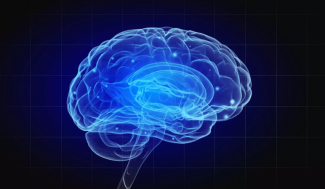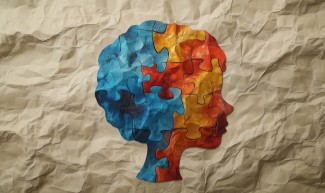What risk factors are associated with Alzheimer's up to 15 years before the onset of the first symptoms? This is a vital question for specialists of this neurodegenerative disease – which develops over many years before becoming clinically visible – who aim to improve early prevention for at-risk patients. A multidisciplinary team of researchers from the Paris Brain Institute’s (INSERM/CNRS/Sorbonne University) Aramis project led by Stanley Durrleman (Inria), from INSERM/University of Bordeaux, and from Cegedim Health Data, analysed the anonymised health records of nearly 80,000 patients consulting general practitioners in France and the United Kingdom, taken from the THIN® database. The scientists identified ten pathologies developed more frequently by patients reporting Alzheimer's dementia within 15 years than by other patients of the same age. Their results are published in the prestigious journal The Lancet Digital Health.
Despite the growing number of findings, our knowledge of the risk factors and early symptoms of Alzheimer's disease remains patchy and based on specific risk factor approaches. Until now, there has been no exhaustive, agnostic study conducted on a very large sample of patients that analyses possible risk factors well ahead of the Alzheimer's diagnosis.
For the first time, a team of researchers has accessed the anonymised medical data of nearly 40,000 patients with Alzheimer's disease and of the same number of control subjects who did not develop neurodegenerative diseases over the period studied. The data was extracted from the THIN® (The Health Improvement Network) database owned by Cegedim Group, an innovative technology and services company specializing in healthcare data.
The Aramis team's expertise in mathematical modelling made it possible to perform an analysis without predefined hypotheses, and test the possible link between the onset of Alzheimer's disease and 123 health factors. Statistical explorations of historical medical records yielded a list of the 10 most common conditions experienced by patients who go on to develop Alzheimer's disease within 15 years. Depression topped the list, followed by anxiety, exposure to high stress, hearing loss, constipation, cervical spondyloarthritis, memory loss, fatigue (and discomfort), and finally falls and sudden weight loss. "The connections made allowed us to confirm known associations, such as hearing problems or depression, and other less known factors or early symptoms, such as cervical spondylosis or constipation. However, we are only reporting statistical associations. These will have to be the subject of further studies to understand the underlying mechanisms,' says researcher Thomas Nedelec, from the Aramis team, “The question remains as to whether the health problems encountered are risk factors, symptoms, or warning signs of the disease”.
Epidemiologist and Inserm research director Carole Dufouil, and neurologist Stéphane Epelbaum, helped validate the methodology and interpret the relevance of these statistical associations. Although these results still need to be refined, they are already valuable for health professionals and all those involved in prevention, who could try to address these risk factors as soon as they are detected and hope to prevent the disease.
This work opens up several prospects, the first of which will be to expand and diversify the corpus of data studied. A grant from the European programme for the study of neurodegenerative diseases (Joint Programme - Neurodegenerative Disease Research) will enable the Aramis researchers to add data from Sweden and Australia to the existing pool and thus to extend their analyses to more than 26 million data from anonymised health records. This will also enable research to be extended to other degenerative diseases (Parkinson's, Charcot's disease, multiple sclerosis, etc.). "We hope, through this approach, to identify the common basis of these diseases and the specificities associated with each one," concludes Stanley Durrleman.
Sources
Identifying health conditions associated with Alzheimer's disease up to 15 years before
diagnosis: an agnostic study of French and British health records, The Lancet Digital Health, February 23, 2022. https://www.thelancet.com/journals/landig/article/PIIS2589-7500(21)0027…
En savoir plus
À propos de l’Institut du Cerveau
Créé en 2010, l’Institut du Cerveau est un centre de recherche scientifique et médical d'excellence international, situé à Paris au cœur de l'Hôpital de la Pitié-Salpêtrière. Son modèle innovant réunit en un même lieu, patients, médecins, chercheurs et entrepreneurs avec un objectif commun : comprendre le cerveau et accélérer la découverte de nouveaux traitements pour les maladies du système nerveux. L’Institut comprend ainsi un réseau de plus de 700 chercheurs et cliniciens (APHP, Sorbonne Université, Inserm et CNRS), 10 plateformes technologiques de pointe, 1 centre d’investigation clinique, 1 organisme de formation et plus de 2000m² destinés à l’incubation de startups. Depuis 2017, il est également le partenaire santé de Station F ; cette implantation lui offre un avantage compétitif dans le domaine de la santé connectée. En 2020, l’Institut du Cerveau a célébré ses dix ans d’existence.
À propos de l’université de Bordeaux
Avec plus de 54 000 étudiants, 6000 personnels dont près de 3200 enseignants-chercheurs et chercheurs, l’université de Bordeaux est aujourd’hui l’une des plus grandes universités françaises. Implantée sur tout le territoire aquitain et reconnue pour la qualité de ses enseignements et son exigence scientifique, elle est un acteur de premier plan de l’enseignement supérieur et de la recherche au niveau régional et national.
Labellisée « initiative d’excellence » par le gouvernement français, elle se positionne parmi les grandes universités européennes de recherche. Ses chercheurs, investis dans des collaborations fructueuses que ce soit avec de prestigieux établissements à l’international ou des industriels de premier plan, contribuent aux grandes avancées scientifiques, à leur transfert technologique et industriel et, d’une manière générale, à la diffusion du savoir.
À propos d’Inria
Inria est l’institut national de recherche en sciences et technologies du numérique. La recherche de rang mondial, l’innovation technologique et le risque entrepreneurial constituent son ADN. Au sein de 200 équipes-projets, pour la plupart communes avec les grandes universités de recherche, plus de 3 500 chercheurs et ingénieurs y explorent des voies nouvelles, souvent dans l’interdisciplinarité et en collaboration avec des partenaires industriels pour répondre à des défis ambitieux.
Institut technologique, Inria soutient la diversité des voies de l’innovation : de l’édition open source de logiciels à la création de startups technologiques (Deeptech).
À propos de THIN®
THIN® (The Health Improvement Network) est une base de données européenne de dossiers de santé électroniques anonymes, collectés au niveau des médecins, appartenant au groupe Cegedim. Les données longitudinales anonymisées de THIN® couvrent à ce jour plus de 69 millions de patients de plusieurs pays européens (France, Royaume-Uni, Espagne, Italie, Belgique et Roumanie). THIN® a pour vocation d’aider les autorités de santé, les chercheurs et centres de recherche à faire progresser la recherche et ainsi améliorer les soins et la prise en charge des patients.
À propos de Cegedim Health Data
Cegedim Health Data fait partie du Groupe Cegedim, un groupe innovant de technologies, de services et de données de santé, spécialisé dans le domaine de la santé depuis plus de 50 ans. Cegedim Health Data fournit des données anonymisées de vie réelle (RWD) et des études avancées (RWE) au profit de l’amélioration de la qualité des soins dans l’intérêt de la santé publique. Un historique de plus de 25 ans et des millions de données patients anonymisées sont immédiatement accessibles depuis la base de données européenne THIN® (The Health Improvement Network). Les acteurs du secteur des sciences de la vie peuvent utiliser les données THIN® tout le long de la chaine de valeur pharmaceutique, depuis la recherche et le développement juqu’au marketing, en passant par l’accès au marché et le médical.







